Search the Special Collections and Archives Portal
Search Results
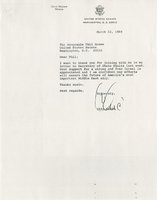

Transcript of interview with Richard Steele and Zakeisha Steele-Jones by Claytee White, February 12, 2015
Date
Archival Collection
Description
Richard Steele became interested in professional boxing at a young age when he was introduced to world champion boxers Chalky Wright and Sugar Ray Robinson. He trained at Hoover Street Gym in South Central, Los Angeles, with trainer Eddie Futch. Richard joined and boxed for the United States Marine Corps and became Marine Corps Middleweight Champion in 1963. Born in Kansas City, Missouri in 1944 Richard and his family moved to Los Angeles, California in the early 1950s. His father was a bartender and his mother was an elevator operator. During the interview Richard’s daughter Zakeisha Steele-Jones discusses the various job titles her father has held, including professional actor and campus police officer. Most notably, Richard was the second Black professional referee in both Los Angeles, California, and Las Vegas, Nevada. A profound interview heralding key character traits, such as, perseverance, resilience, strength, and determination, Richard recalls being personally invited by Nelson Mandela to referee the WBC Convention in South Africa. Some of Richard’s most memorable title fights to date include, the Hearns and Hagler fight, Sugar Ray Leonard and Tommy Hearns, and four Mike Tyson fights. Zakeisha also interjects that her father currently manages and owns a boxing gym where he trains and mentors young Black and Hispanic aspiring boxing champions and referees.
Text
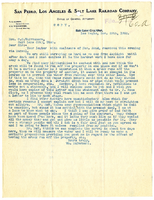
Letter from William McDermott to C.O. Whittemore, November 29, 1902
Date
Archival Collection
Description
Text
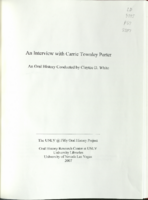
Transcript of interview with Carrie Townley Porter by Claytee D. White, February 7, 2006
Date
Archival Collection
Description
Text
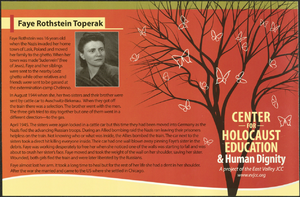
Soroptimist International Sierra Nevada Region Records
Identifier
Abstract
The Soroptimist International Sierra Nevada Region Records are comprised of memoranda, newspaper clippings, brochures, and communications from 1975 to 1998. The collection includes information about the Soroptimist International Sierra Nevada Region chapter's involvement with women's rights issues, primarily the Equal Rights Amendment ratification campaign in Nevada and California, as well as national efforts.
Archival Collection
Merle and Beulah Frehner Photograph Collection
Identifier
Abstract
The Merle and Beulah Frehner Photograph Collection contains photographs of Southern Nevada from 1905 to 1955. The materials include photographs of the Frehner freight teams transporting ore, schools and students in the Moapa Valley, the Colorado River, and parades in Southern Nevada.
Archival Collection
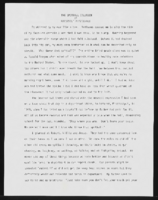
"The Spitball Solution": article draft by Roosevelt Fitzgerald
Date
Archival Collection
Description
From the Roosevelt Fitzgerald Professional Papers (MS-01082) -- Drafts for the Las Vegas Sentinel Voice file. On innocent pay with the guilty.
Text


